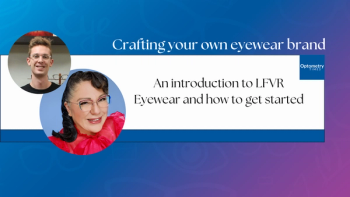
New drop for neurotrophic keratitis uses human nerve growth factor
Historically optometrists have had few options for patients with chronic, neurotrophic corneal defects like nonhealing superficial punctate keratitis (SPK) or sterile corneal ulcers.
Artificial tears and more recently even amniotic membranes have left many patients still battling chronic
With a new topical eye drop on the market, optometrists are able to target the underlying concern behind neurotrophic corneal defects: the damaged corneal nerves themselves.
Apex, NC, optometrist Michael Marino shares his experience as the first optometrist to prescribe
More from Defocus Media:
About Oxervate
Oxervate became the first U.S. Food & Drug Administration (FDA)-approved treatment for neurotrophic keratitis in
The medication was given orphan drug status by the FDA, which fast-tracked its’ approval to be used by both optometrists and ophthalmologists in the United States.
Candidates for the medication are patients with sterile, neurotrophic corneal defects secondary to damage to any level of the trigeminal nerve (cranial nerve V).
More from Defocus Media:
A patient with active herpetic disease should be fully treated first with topical antivirals before treatment for neurotrophic keratitis is initiated.
Dr. Marino says that his patient had previously had multiple herpes simplex reactivations that had left her cornea neurotrophic. He had been treating a non-healing neurotrophic ulcer for nearly a year before he started her on Oxervate after the corneal defect failed to fully heal even after amniotic membrane treatment.
Study results
The
After eight weeks, 72 percent of patients in the Oxervate treatment group were completely healed versus only 33.3 percent in the vehicle group. An additional study
More from Defocus Media:
Dr. Marino reports that his patient did not experience significant discomfort using the drop but did report a “tingling sensation” with use. Eye pain or ocular irritations is the most common adverse reaction reported with Oxervate use, with 16 percent of patients in clinical trials experiencing this symptom.3Researchers theorize this side effect is associated with the cornea regaining sensation and can be evidence of a cornea that’s healing. Other less common side effects of drop use were corneal deposits, inflammation, epiphora, and hyperemia.
Prescribing
The process for prescribing the medication can seem daunting at first glance-a quick search on
Dr. Marino worked with the company’s pharmaceutical reps to get his patient coverage through the Dompé Connect to Care program which helps file insurance and then apply copay cards and a patient assistance program to reduce the financial burden.
When prescribing the medication, only one pharmacy in the U.S. that provides access to the drop: Accredo Specialty Pharmacy (877-831-8112).
Due to its properties, the medication requires that doctors provide education for patient success. Oxervate is dosed six times per day for eight weeks of treatment, and it arrives stored in glass vials that must be refrigerated before use. The medication is delivered directly to the patient with weekly shipments of the needed vials.
To learn more about this medication and how to prescribe it for your patients, listen to this podcast or contact Dr. Michael Marino at
References:
1.U.S. Food & Drug Administration. FDA approves first drug for neurotrophic keratitis, a rare eye disease. Available at: https://www.fda.gov/news-events/press-announcements/fda-approves-first-drug-neurotrophic-keratitis-rare-eye-disease. Accessed 10/16/19.
2.Sacchetti M, Lambiase A. Diagnosis and management of neurotrophic keratitis. Clin Ophthalmol. 2014;8:571-579.
3. Bonini S, Lambiase A, Rama P, Sinigaglia F, Allegretti M, Chao W, Mantelli F; REPARO Study Group. Phase II Randomized, Double-Masked, Vehicle-Controlled Trial of Recombinant Human Nerve Growth Factor for Neurotrophic Keratitis. Ophthalmology. 2018 Sep;125(9):1332-1343.
4. Clinicaltrials.gov. Evaluation of Efficacy of 20 µg/ml rhNGF New Formulation (With Anti-oxidant) in Patients With Stage 2 and 3 NK. Available at: https://clinicaltrials.gov/ct2/show/results/NCT02227147?view=results. Accessed 10/16/19.
Newsletter
Want more insights like this? Subscribe to Optometry Times and get clinical pearls and practice tips delivered straight to your inbox.


















































.png)


